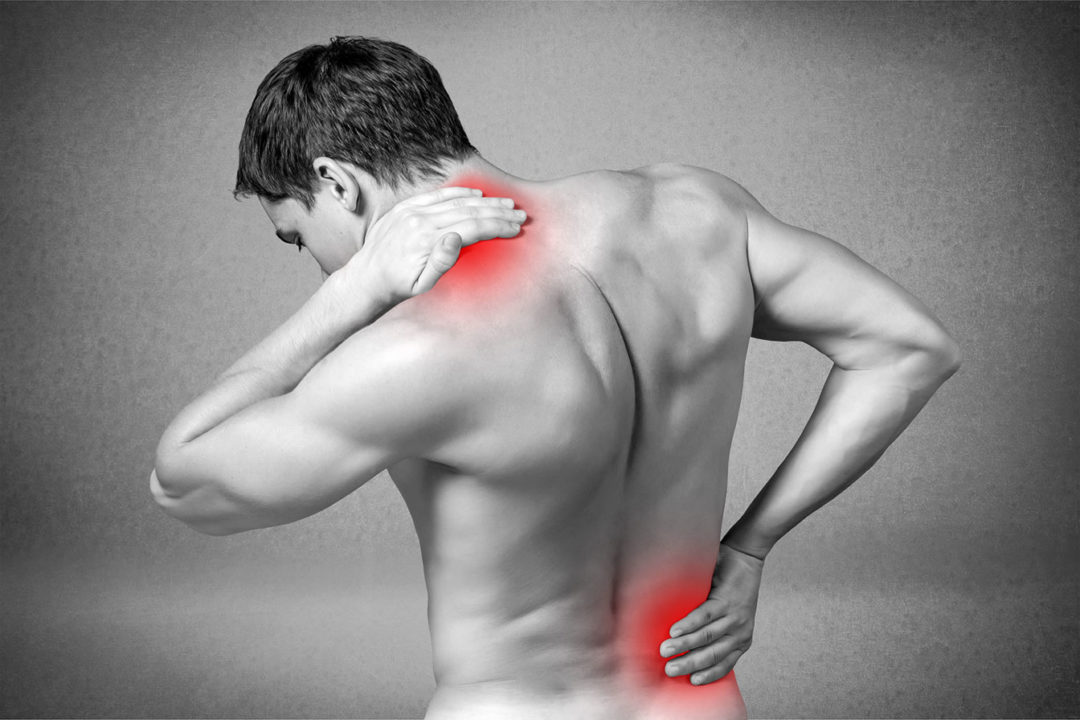
Natural Pain Support

Topical SupportOne common topical treatment is aloe vera, which soothes skin and also stimulates skin growth and repair (3). This may be due to the presence of 75 potentially active constituents (4). In particular, mannose and glucose, two sugars that promote skin healing and may be helpful to those with skin rashes (4). Aloe vera also contains the anti-inflammatory sterols phenylaianine and tryptophane. In one clinical trial, an aloe vera cream was applied for four weeks and was shown to reduce the symptoms of psoriasis in participants.
Another topical ingredient that may be helpful in soothing minor aches, pains and even headaches is menthol, an organic compound obtained from the oils of peppermint, eucalyptus and pennyroyal. Often found in cold and flu products, menthol, when applied topically, stimulates the nerves to produce a numbing effect and expands the blood vessels, which can increase blood flow to the area. Menthol was also shown in a randomized double-blind, placebo-controlled clinical trial, published in the Journal of Clinical Rheumatology, to be effective in relieving the pain and stiffness associated with osteoarthritis.
Camphor, particularly white camphor oil, which is a common ingredient in mentholated products and ointments, is used topically to help ease pain, stiffness and itchiness (5). Although it is unclear how camphor stimulates nerve endings to relieve pain and increase local blood flow to reduce swelling, it is suggested for use in low concentration and preferably with a carrier oil. However, it should never be applied to open wounds, burns or taken orally due to high crude extracts of camphor being toxic.
Arnica has also been used to soothe muscle aches and support balanced inflammation (6). Arnica’s properties may be attributed to its content of thymol, which has been found to help facilitate the transport of blood and fluid accumulations and also acts as an anti-inflammatory to assist to normal healing processes (7). Arnica was also found in a study at Northwestern University’s Department of Dermatology to be more effective at reducing bruises than low concentrations of vitamin K.
Capsaicin, a colorless and orderless compound, not only gives peppers their heat, but has also been shown in studies to relieve pain in those suffering from psoriasis, rheumatoid arthritis and osteoarthritis. This may be due to capsaicin’s ability to deplete the body’s supply of substance P, a chemical component of nerve cells that are involved with transmitting pain signals to the brain.
Herbal SupportGinger, particularly the root-like stem, rhizome, contains oils and phenol compounds, such as gingerols and shogaols, which are rich sources of antioxidants that are helpful to those with menstrual cramps, headaches, soreness and even nausea (8). In one study, ginger helped reduce pain from osteoarthritis. The extract was given twice a day and resulted in participants needing fewer pain-killing medications than those receiving a placebo.
Another option is devil’s claw. This tiny fruit has secondary roots called tubers which contain iridoids, such as glycosides and harpagoside, components that have strong anti-inflammatory effects. In a study published in Phytomedicine, 227 people with lower back pain or OA of the knee or hip reported having up to 70 percent improvement in mobility and pain after being given 60 mg of a devil’s claw extract for eight weeks (9).
Studies have also shown that curcumin, found in the roots of turmeric, have antioxidant properties that can be used by those suffering from arthritis, joint pain, lichen planus, skin inflammation, headaches, menstrual problems, OA and more (10).
Willow bark is a last option used to soothe pain (11). Salicin, a chemical similar to aspirin and found in the bark of white willow, and the anti-inflammatory plant compound flavonoids, are thought by researchers to account for the bark’s pain-relieving and anti-inflammatory effects.WF
References 1. Mayo Foundation for Medical Education and Research. “Analgesic Combination, Acetaminophen/Salicylate,” www.mayoclinic.org/drugs-supplements/analgesic-combination-acetaminophen-salicylate-oral-route/side-effects/drg-20069948, accessed Sept. 12, 2016. 2. G.T. Carter, et al., “Side Effects of Commonly Prescribed Analgesic Medications,” Phys. Med. Rehabil. Clin. N. Am., 25 (2), 457–470 (2014). 3. University of Maryland Medical Center, “Aloe,” Mar. 24, 2015, http://umm.edu/health/medical/altmed/herb/aloe, accessed Sept. 12, 2016. 4. A. Surjushe, R. Vasani and D.G. Saple, “Aloe Vera: A Short Review,” Ind. J. Dermatol. 53 (4), 163–166 (2008). 5. J. Mercola, “White Camphor Oil: The Purest Camphor Oil,” http://articles.mercola.com/herbal-oils/white-camphor-oil.aspx,accessed Sept. 14, 2016. 6. University of Maryland Medical Center, “Arnica,” March 24, 2015, http://umm.edu/health/medical/altmed/herb/arnica, accessed Sept. 16, 2016. 7. J. Mercola, “If You’re Into Sports, Arnica Oil May Come in Handy,” Aug. 18, 2016,http://articles.mercola.com/herbal-oils/arnica-oil.aspx,accessed Sept. 16, 2016. 8. University of Maryland Medical Center, “Ginger,” June 22, 2015,http://umm.edu/health/medical/altmed/herb/ginger,accessed Sept. 16, 2016. 9. University of Maryland Medical Center, “Devil’s Claw,” June 22, 2015,http://umm.edu/health/medical/altmed/herb/devils-claw, accessed Sept. 16, 2016. 10. University of Maryland Medical Center, “Turmeric,” June 26, 2014,http://umm.edu/health/medical/altmed/herb/turmeric, accessed Sept. 16, 2016. 11. University of Maryland Medical Center, “Willow Bark,” Aug. 5, 2015,http://umm.edu/health/medical/altmed/herb/willow-bark,accessed Sept. 16, 2016.
Published in WholeFoods Magazine November 2016
Related Articles

The editorial team at WholeFoods Magazine has decades of experiences reporting on natural products industry news, trends, and more. This national, monthly business-to-business magazine has been published continuously for nearly 40 years (the magazine was founded in 1977, and has been owned by Wainer Finest Communications since 1984). It is the longest-tenured media outlet of its kind in the natural products industry. The editorial focus at WholeFoods Magazine is, and always has been, on informing and educating members of the natural products industry.
*These statements have not been evaluated by the Food and Drug Administration. These products are not intended to diagnose, treat, cure, or prevent any disease.
The Magazine
Information
About Us
NOTE: WholeFoods Magazine is a business-to-business publication. Information on this site should not be considered medical advice or a way to diagnose or treat any disease or illness. Always seek the advice of a medical professional before making lifestyle changes, including taking a dietary supplement. The opinions expressed by contributors and experts quoted in articles are not necessarily those of the publisher or editors of WholeFoods.







